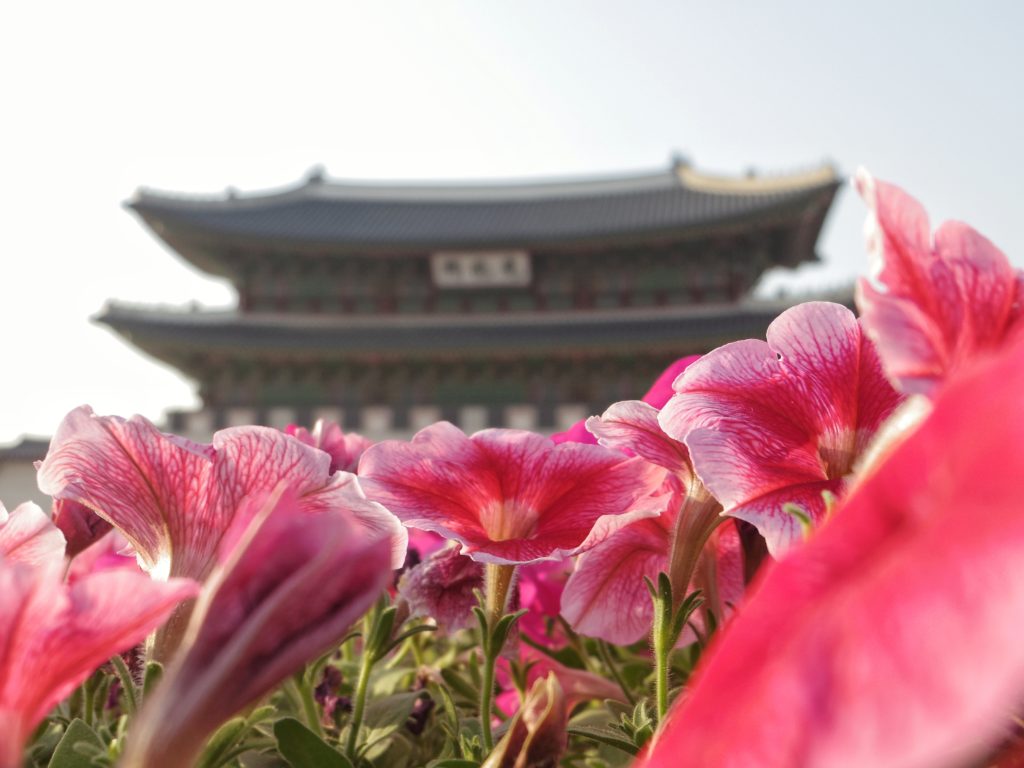
The finest Asian pop culture, anyone?
Seoul is a modern city that has a lot for every taste, even for the budget traveler. Culture-rich landmarks, beautiful nature, effervescent pop culture, globally-acclaimed food, and dreamy cityscapes. One does not really have to put much effort to have a memorable time in this city with more than 9 million people and uncountable spots to feel like in a scene of any Korean drama.
Arriving
I know I said this city has something for the budget traveler, but since Seoul has a higher-than-the-average cost of living, you will have to apply some strategies to stick to your budget as much as possible without sacrificing the experience. Straight to the point, food will be the most expensive element in your budget. A general rule that I have applied when traveling to higher-than-the-average cost of living destinations (an article coming on that later on), I recommend to set two or three days of your visit for a great triumphant meal (say, a proper, all-you-can-eat Korean barbecue, which is about USD 25) and try to make it with two meals the rest of the days (brunch and late dinner). If you are an ever-hungry person as I am, convenience store or supermarket food can help you to feel satisfied between those meals. It might sound too extreme if you have never done it, but trust me, you will survive and your chances to stay under your budget will increase significantly.
Basic expenses in Seoul
According to my own experience, some average expenses for Seoul city are as follow:
- Daily transportation (metro and bus): USD 10
- 4G for a week: USD 10
- Daily meals (2) and snacks: USD 20
- Night at a budget hostel: USD 12
With that said, unless you got the k-pop fever, or you are just into Korean culture more than the average visitor, I consider that one week in Seoul gives you enough time to wander freely among the most important landmarks and every major attraction in Seoul. Thus, I have separated this travel guide in days to give you an idea of places you can put together due to their closeness to each other, making your exploration less tiring and more efficient. Brace yourself, though, because although it may seem a few things per day, it means lots of walking and too much awesomeness to process in so little time!
Travel Itinerary for Seoul
Day 1: Bukchon Hanok Village, Gyeongbokgung Palace, and Gwanghwamun Square.
If you take the metro, alight on Anguk Station and roam around Insadong for brunch or for souvenirs. Here, there are plenty of shops where you can rent a Hanbok costume as well for about USD 13. To start your route, head north to Bukchon Hanok Village. Once you make it to this iconic alley of the village, and after having appreciated the beautiful architecture and peaceful atmosphere of the area, walk your way west, until you reach the main street and the Gyeongbokgung Palace will be difficult to miss.
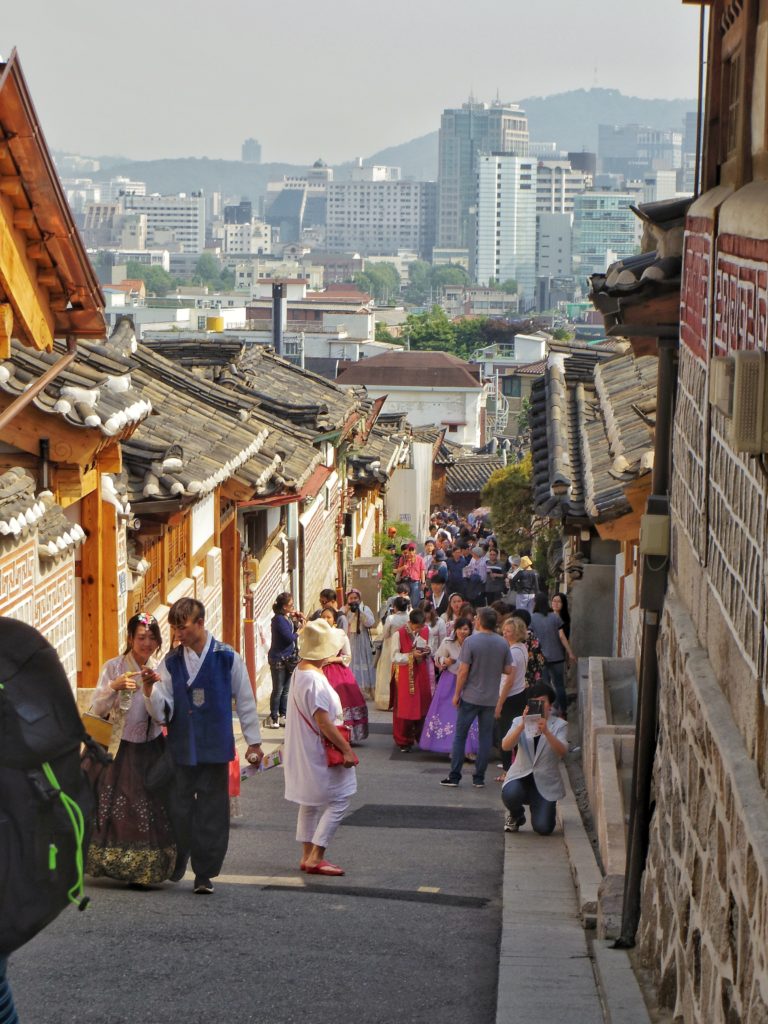
The visit to this impressive building can take from 2 to 4 hours, depending on how much time and money you are willing to spend. The base fee for adults is 3,000 Won (a bit less than USD 3). There are inner areas where you can only access if you pay more for it. In any case, after this, just look for the south entrance of the palace, cross the street, and you will be in Gwanghwamun Square.
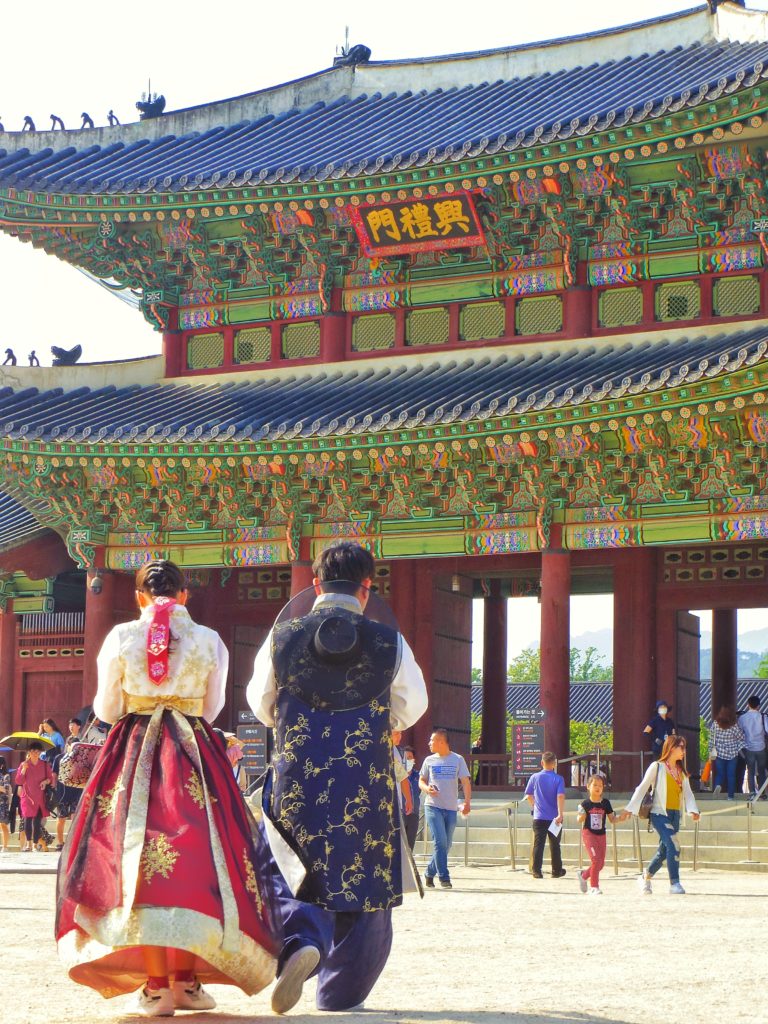
Day 2: Namsan Tower and Itaewon-dong.
Namsan Seoul Tower is probably the most iconic landmark of Seoul’s cityscape and the first tower-type tourism spot in Korea with almost 480 m above the sea level. Needless to say, heading to the observatory on the top is a must when visiting Namsan Mountain for the 360-degree view of the city that it offers.
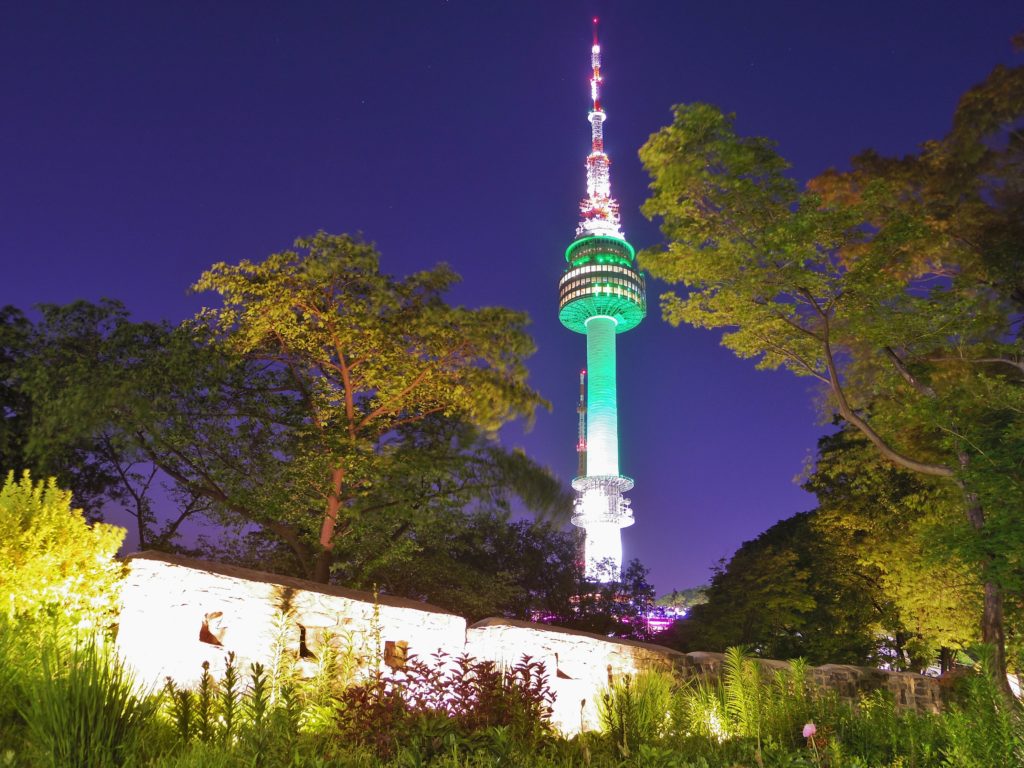
The tower can be reached by car, bus, cable car or on foot. If you feel adventurous, however, walking your way to the top is definitely worth it, since Namsan Mt. itself offers some magnificent views. The entrance fee to the observatory is 10,000 Won (about USD 9).
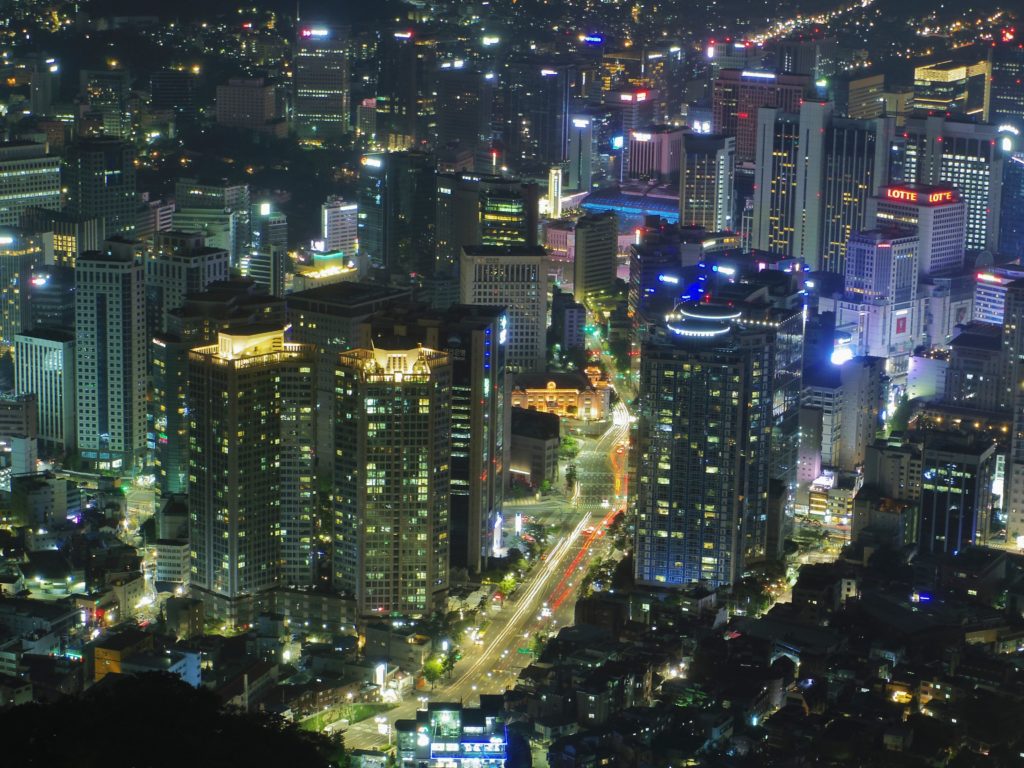
When you are done contemplating this incredible city view, and taking pictures of every side of it, head up to Itaewon-dong for food. This area is well-known among locals and foreigners living in Seoul alike for its nightlife. It is the ideal place to hang out with friends and have a really good time eating Seoul´s finest and most famous meals.
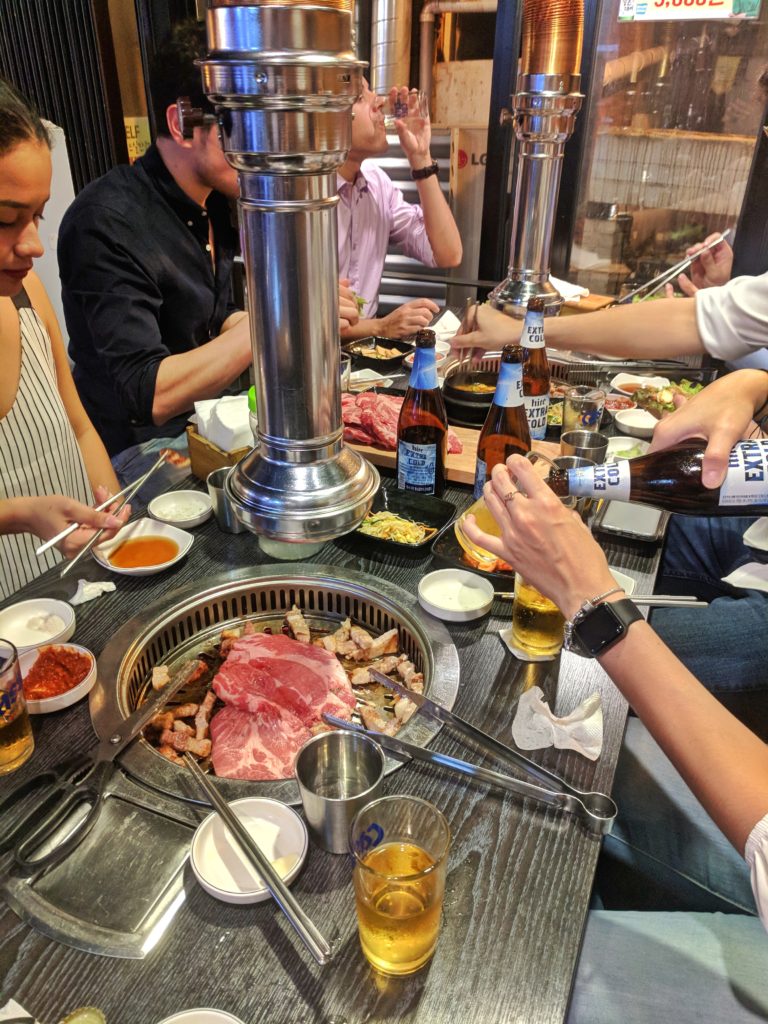
Day 3: Dongdaemun Design Plaza (DDP), Ihwa Mural Village and Heunginjimun.
You can either alight at Dongdaemun Station or Dongdaemun History & Culture Park. This will depend on where you want to start your route. My only recommendation here is to try to get to the area while there is still daylight since both places are better appreciated during the day.

Heading to the Ihwa Mural Village will take you about 20 minutes walking north from any of the stations. Once you get to this point, you will immediately feel the colorful charm of cafes, murals, and shops. The place was made popular internationally due to its appearance in Korean dramas and movies. If you follow the stairs to the top of the village you will find the city walls from which you can have an impressive view of the surrounding hills crammed with suburb buildings.
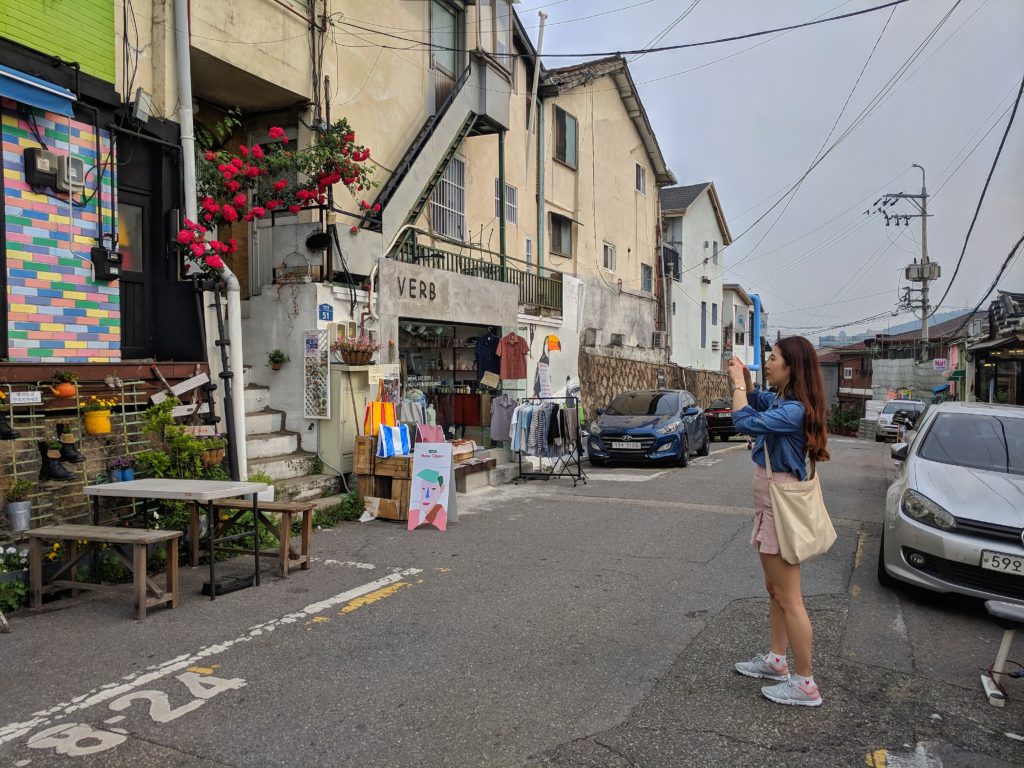
Follow the wall all the way down to finally have a view of Heunginjimun, the old city gate. The DDP is just a block south of Heunginjimun and is worth visiting due to the impressive futuristic design and the variety of events held here every day. There is also an online registration service for an architectural tour if you are an enthusiast.
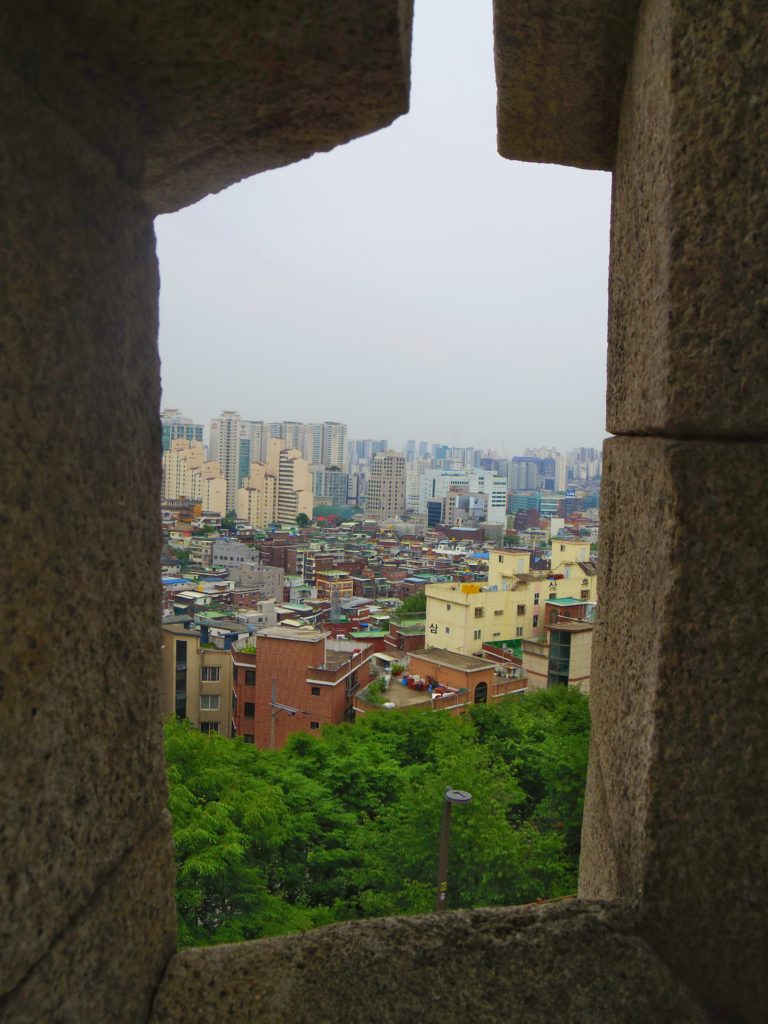
Day 4: Demilitarized Zone (DMZ) Tour, Seoul Station (Namdaemun Market) and Myeong-dong Street Market.
I am personally a huge fan of historical landmarks and visiting the border between South and North Korea was definitely on the top of my list of things to do when visiting Seoul. Although physically, the border is not part of the city, virtually every hostel and hotel in the city offer this tour. Just ask at the counter to book one out of the few options available. Usually, it is possible to book a tour for the next day with pick-up at your hostel included.
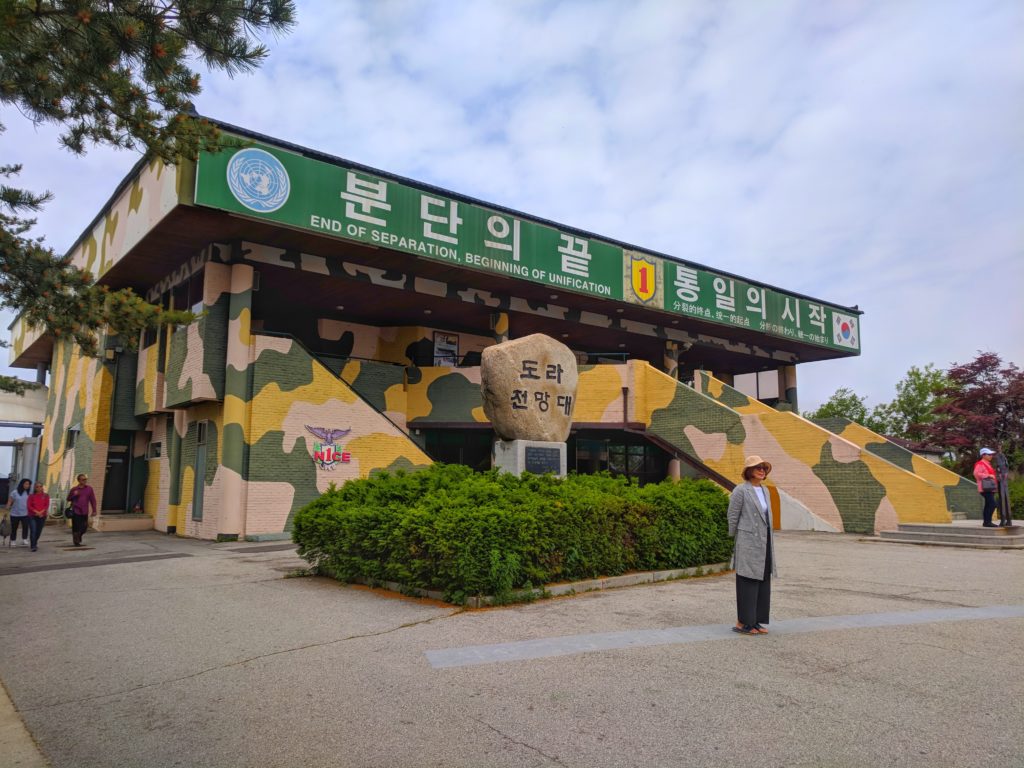
But if you really want to check North Korea out of your bucket list, make sure to visit the Joint Security Area (JSA), where tourists are tightly guided through this historical installation and you can technically “step into” North Korea (and take a picture of it). Keep a close eye on the news about meetings between both leaders, though, because this is actually the place where the leaders of both Koreas meet, and the part of the tour through JSA might end up
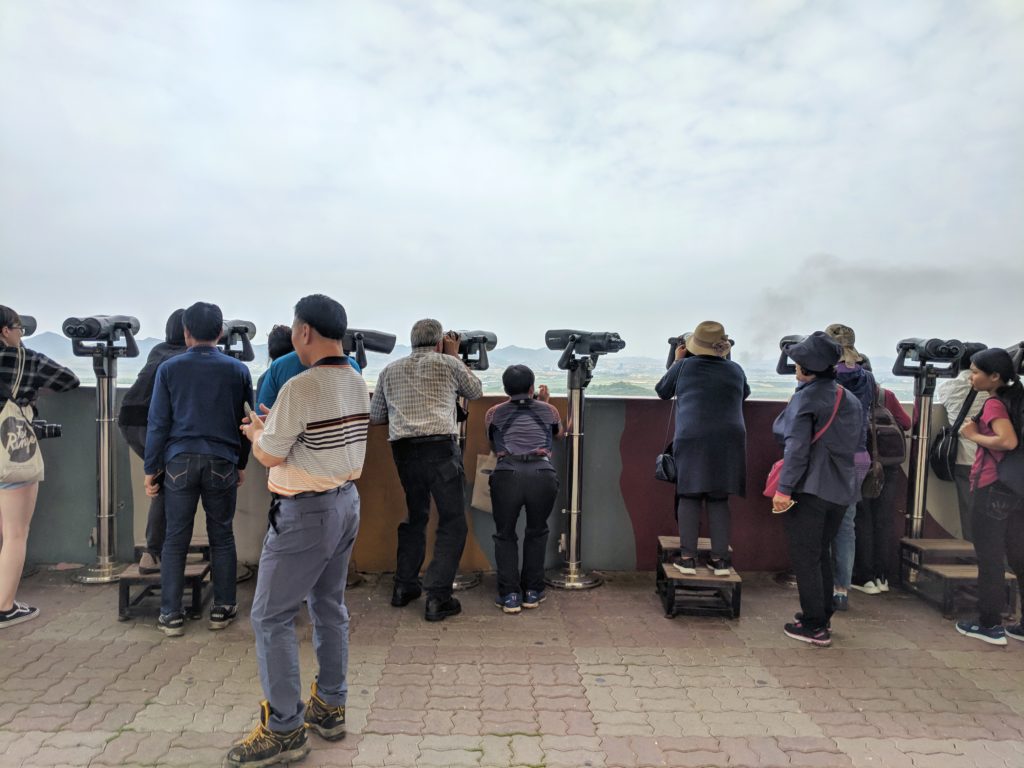
On your way back to Seoul, several alighting options are offered. I recommend alighting close enough to Seoul Station. After a quick look at the lovely exterior façade of this major train station, head east, to Namdaemun Market for some souvenirs and well-deserved snacks. To finish your day, head even more east to find Myeong-dong Street Market for dinner.
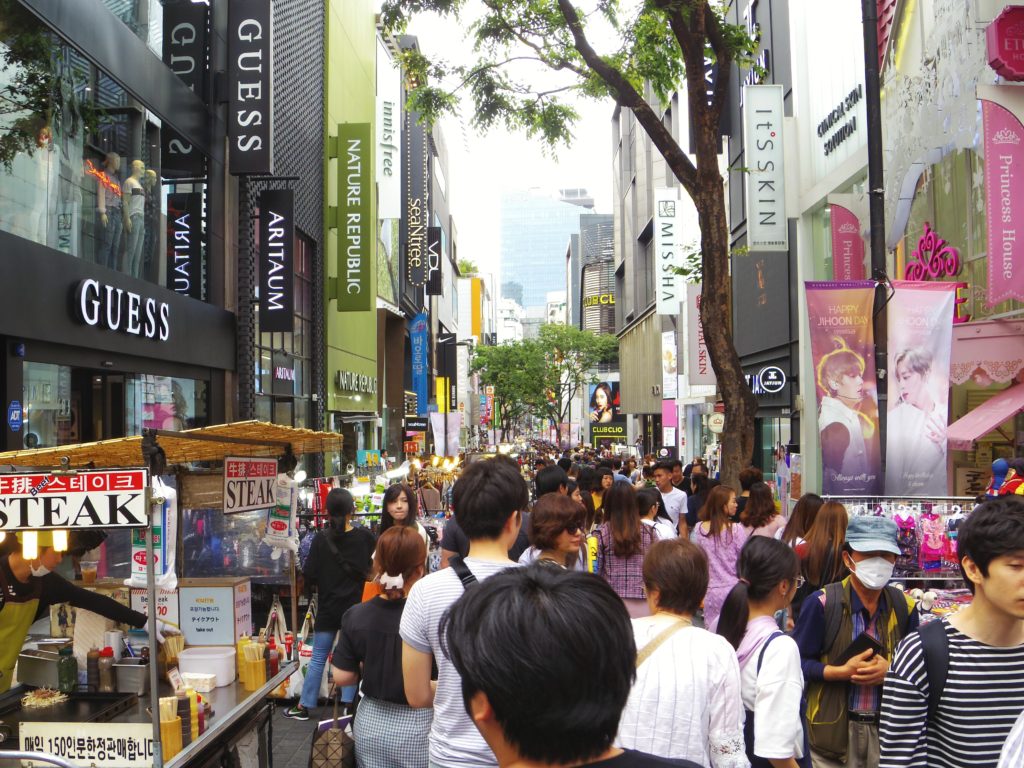
Day 5: Cheonggyecheon, Seoul Plaza and Deoksugung.
If you have followed this guide to the letter, at this point you might want to have a moment of relaxing and just feel yourself abroad, enjoying a foreign atmosphere. The locals also know this very well and they created this 11-kilometer-long public recreation space with an artificial river just in the middle of the city, just south of Gyeongbokgung Palace and Gwanghwamun Square. Chilling never felt so good when you see people just enjoying and dipping their feet into the stream, listening to the music of street musicians, having some iced coffee and snacks from the nearby stalls. Once more, if you are a fan of Korean dramas, this place will feel just too familiar.
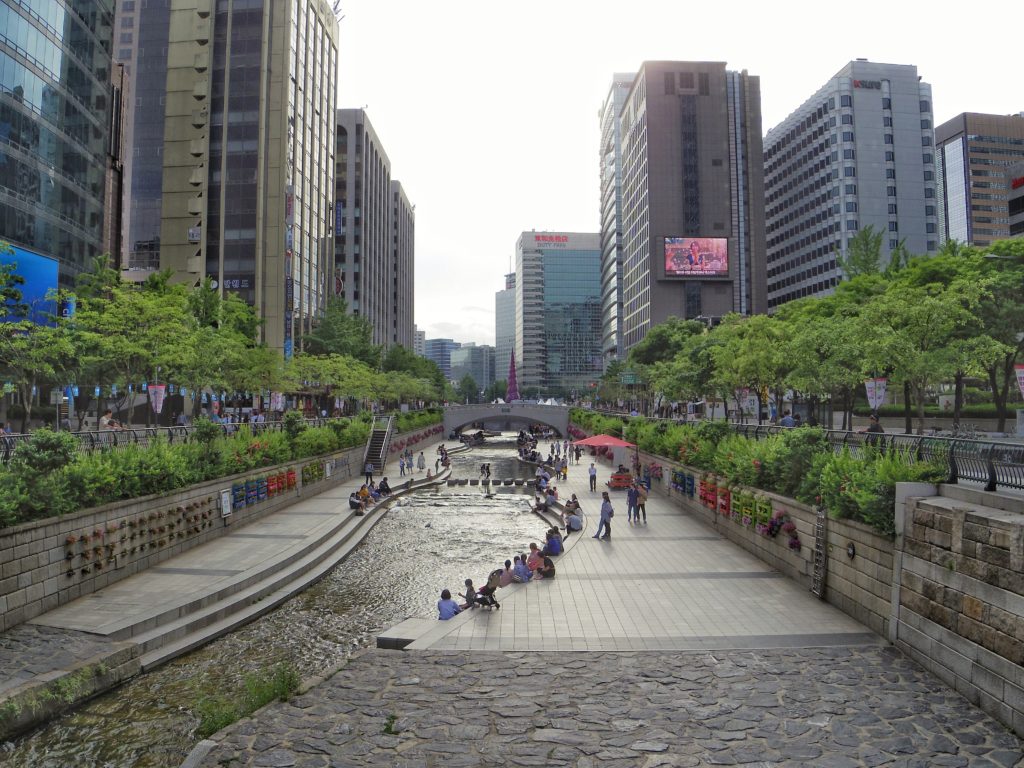
Next, Seoul Plaza is another public recreation area surrounded by the high buildings of the downtown. Either you stay or just walk by, spend some time to admire the architecture of Seoul Metropolitan Library. Just crossing the street to the west of this plaza, and at the corner of the city’s busiest intersection, lies Deoksugung, a palace and temporary residence in the past, not as big as other palaces to tire you up. Visit this place to admire the elegant stone-wall road for just 1000 Won (less than USD 1).
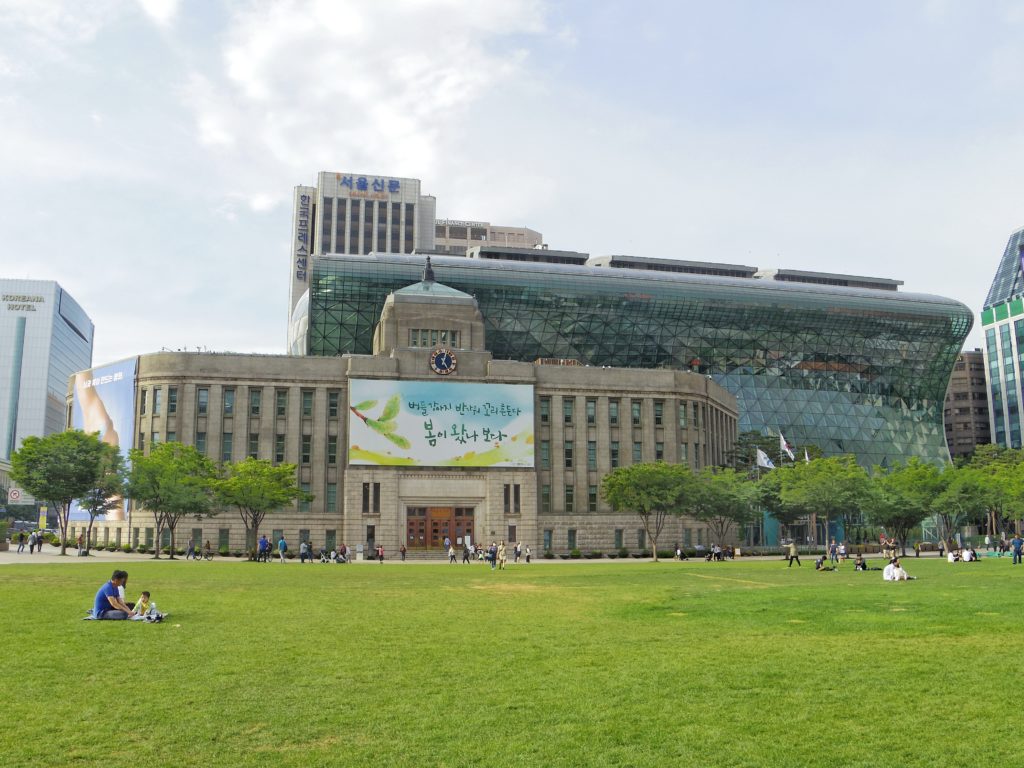
Day 6: Ewha Woman’s University and Hongik University.
University life in Asia means amazing night markets and budget restaurants with tasty food nearby. It is not the exception in Seoul. For this reason, I consider that it is worth experiencing. Located in the same metro line, Ewha Woman’s University and Hongik University make a great pair for a tourist walk. You can start the day alighting at Ewha Woman’s University Station and after passing some blocks to the north, the iconic green-roofed constructed canyon of the newest campus complex will be hard to miss. Completed in 2008, this one-of-a-kind structure consisting of six levels contains a library, parking spaces, classrooms, cafeteria and exhibition places. Hang around the area to find stores for every need of the student life. From clothes to electronic gadgets, you can even taste the (delicious) cafeteria food to save some bucks.

Although not having any remarkable piece of architecture, Hongik University is located in a lovely neighborhood just a few stations west to as Ewha. Especially when the night falls, the nightlife around the area has much to offer. Very similar to Itaewon-dong, the distinguishing feature is the recently finished green area along Yanghwa-
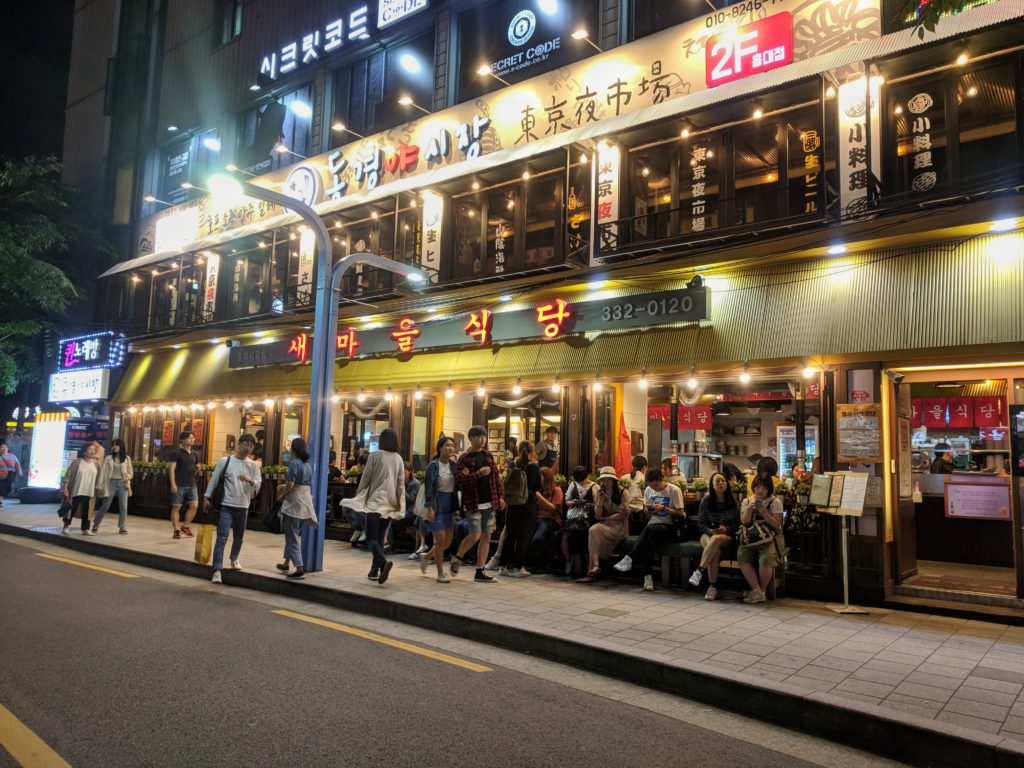
Day 7: Gangnam District, Dosan Daero and Bandpo Hangang Park.
Last but not least, we cannot leave out the world-famous Gangnam district, made famous by the Korean artist PSY with his Gangnam Style. This district is the modern and upscale center of Seoul. Alight at Gangnam station and give yourself some freedom to walk the super clean and open streets of this district. The back streets offer plenty of food options and many western food chains are present here as well. If you are into nightlife, this is the right place for you.
North of here, you can reach Dosan Daero Boulevard, a fancy area with impeccable aesthetics and Beverly-Hill style atmosphere. Alight at Sinsa Station and walk east. Both Gangnam and Dosan Daero are great places for window shopping, so be ready to walk a lot.
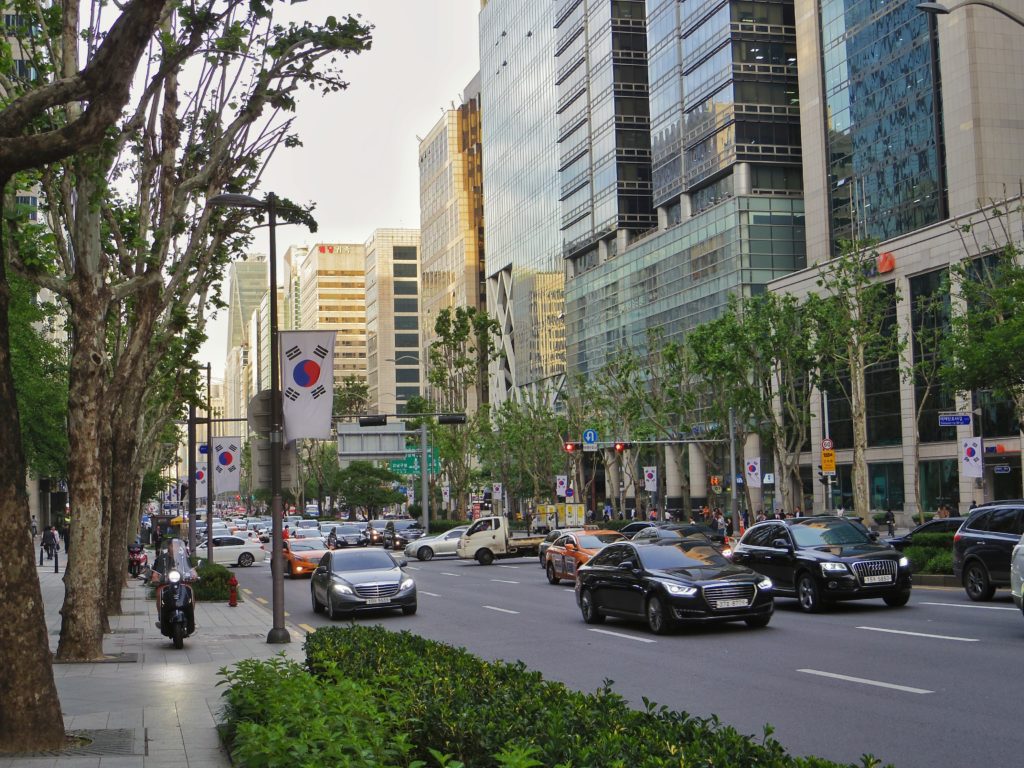
I suggest heading to Banpo Hangang Park by alighting at the Express Bus Terminal Station. This is a great way to finish the day and to culminate an unforgettable week in Seoul. The Banpo Bridge offers a jet water fountain along its own length colorfully illuminated at night, making it a perfect free show. People love to come to this park to have a unique view of the Han River, Namsan Mountain, and Namsan Tower. So, grab your favorite drink, some snacks and sit to enjoy the dreamy sunset and the nightfall at the riverside.
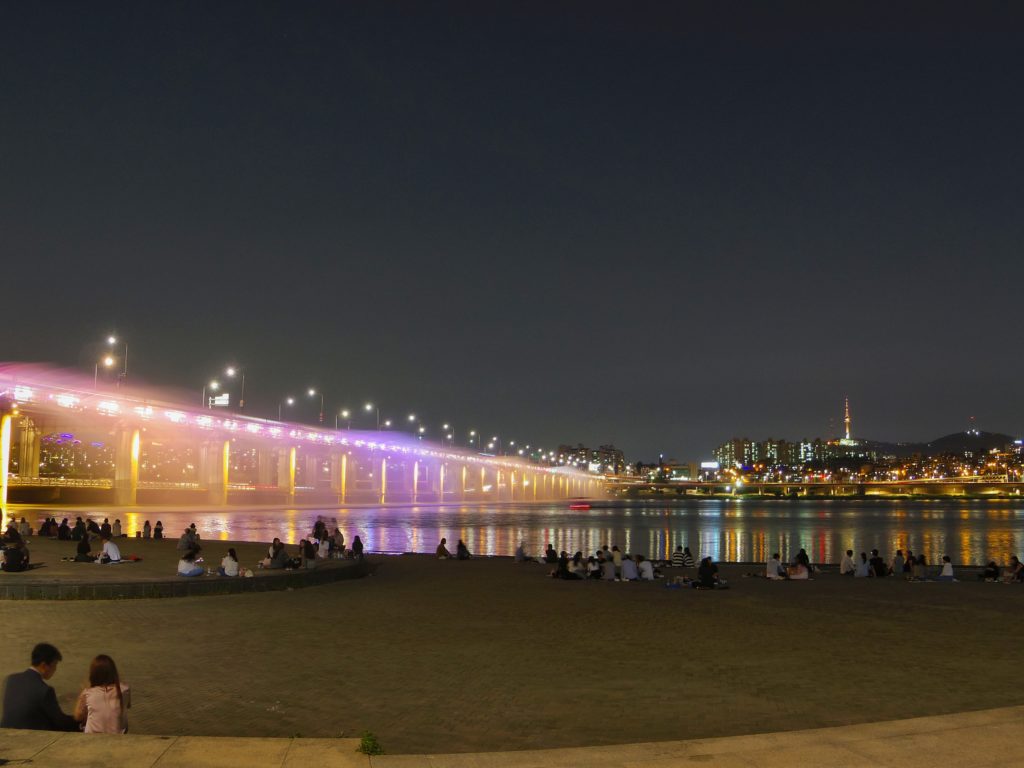
Final comments
After touring in this city for seven days, I just saw more interesting stuff coming out that I certainly wanted to see and experience. Seoul certainly has that charm to make you stay for way longer. However, with a travel guide like this, a week is a fair time of stay to enjoy it properly, feeling like inside a pastel-colored Korean drama, back in time a couple of centuries ago, or marveled at the incredible flavor of the local cuisine.